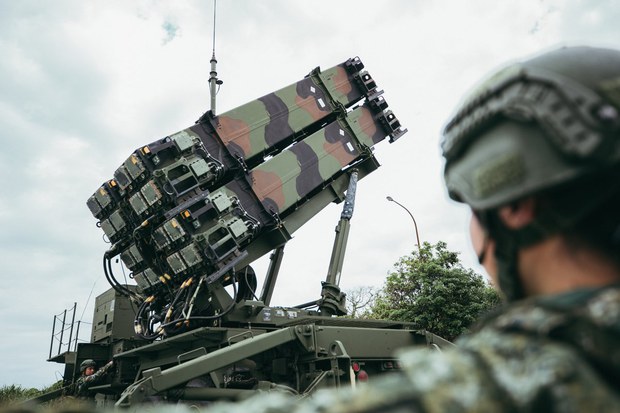US sends scores of military advisers to Taiwan as China threat continues
Share

Training at a Taiwanese anti-aircraft unit at an undisclosed location, April 9, 2023.
Around 200 U.S. military advisers have been deployed to Taiwan, reportedly to train local troops against potential attacks from China, five times the number of American personnel based on the island at the end of last year.
U.S. advisers had been sighted as early as the end of March at a base in Kaohsiung’s Gangshan District, according to local media reports.
The advisers “have been primarily assigned to boot camps and reserve brigades,” the official Central News Agency (CNA) quoted unnamed sources within the armed forces as saying.
Currently stationed at bases across Taiwan, they will provide practical consultations on training methods to the Taiwanese military, CNA reported.
However Wendell Minnick, Taipei-based editor of the ‘China in Arms’ military blog, told Radio Free Asia that the teams are in Taiwan for observation and evaluation, not training troops.
The Pentagon’s plans to deploy military advisers to Taiwan were first revealed in February. It is understood that they were prearranged for months and not connected to the latest developments in the Taiwan Strait, such as China’s recent military exercises.
Taiwan also plans to send a combined arms battalion to the United States for training in the second half of this year, it was reported earlier.
“Taiwan’s military needs as much direct exposure to other militaries as possible as it has been isolated for over 40 years and its capability development has languished as a result,” said Grant Newsham, a former U.S. Marine colonel in an interview with Radio Free Asia.
In his opinion, both militaries should work on a joint operation planning “for future contingencies.”
Several prominent figures in the U.S. military have predicted different timelines for a possible Chinese invasion and urged the island’s leadership to build up defense capabilities.
Beijing considers Taiwan a Chinese province and threatens to unify it with the mainland, by force if needed.
Evacuating foreign workers
Meanwhile, several Southeast Asian governments are reportedly putting their own contingency plans in place for a potential Chinese invasion of Taiwan.
Indonesia is working on an emergency plan to evacuate 350,000 Indonesian nationals from Taiwan if war breaks out, reported Kompas newspaper.
The paper quoted Judha Nugraha, Director of the Civil Protection Bureau at Indonesia’s Ministry of Foreign Affairs, as saying last Friday that “a contingency plan has been drawn up in collaboration with the Indonesian Economic and Trade Office in Taipei.”
Jakarta continues to closely monitor the situation, he said, adding that hundreds of thousands of Indonesians living nearby such as in Hong Kong, South Korea and Japan would also have to be evacuated should there be a war in Taiwan.
“Evacuating such a large number of people would be extremely complicated,” the official said.
The Philippines has also confirmed it has an evacuation plan for 150,000 Filipinos currently living in Taiwan.
The Philippine Department of Foreign Affairs on Monday said that “contingency plans are in place in all places where there are high numbers of OFWs,” an acronym for Overseas Foreign Workers.
There are around 730,000 migrant workers from Southeast Asia currently in Taiwan, representing 3% of the population, according to official statistics.
The largest groups are from Indonesia, Vietnam, the Philippines and Thailand.
There are around 200,000 migrant workers from Vietnam and more than 60,000 from Thailand living in Taiwan. So far the Vietnamese and Thai governments have not announced any emergency plans for their citizens.
The bloc of Southeast Asian nations ASEAN is currently still working on two documents about the protection of migrant workers during a crisis and the protection of migrant workers on fishing vessels.
Edited by Mike Firn.







